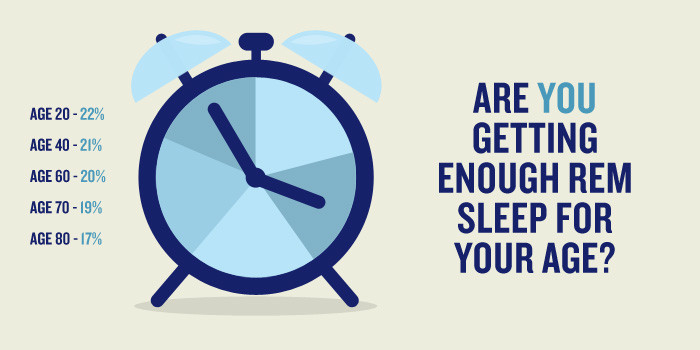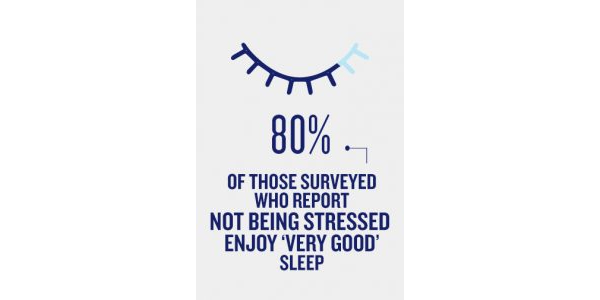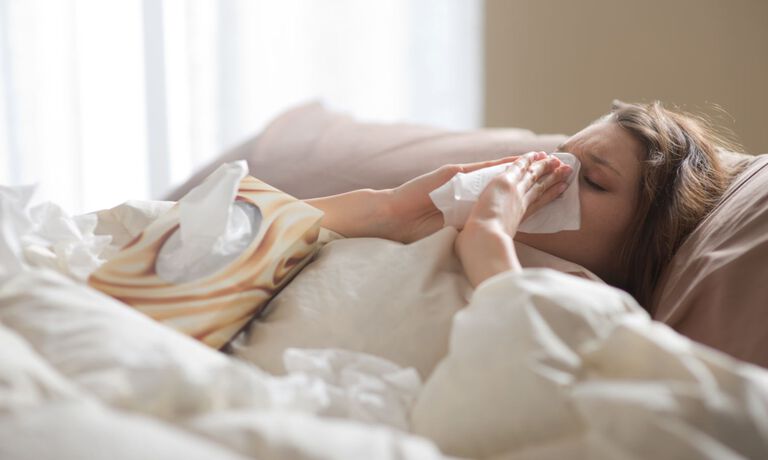DO I HAVE SLEEP APNOEA?
Sleep disorders such as sleep apnoea are more common than many people think. According to Better Health*, it’s estimated that about five per cent of Australians suffer from sleep apnoea, with around one in four men over the age of 30 years affected.
WHAT IS SLEEP APNOEA?
Sleep apnoea – known as sleep apnea in the United States – is a sleep disorder that occurs when the walls of the throat come together during sleep. This blocks the upper airway, stopping breathing for a short amount of time (usually between 10 seconds and one minute).
When the brain registers this lack of breathing or a drop in oxygen levels, it reacts by sending the body a small wake-up call. Lasting for just a couple of seconds, this wake-up call rouses the sleeper enough to open the upper airway, allowing breathing to resume.
The sleeper may gasp or snort, but will usually fall back to sleep almost immediately, to then continue the cycle. This may happen hundreds of times a night, with the sleeper having no knowledge of it occurring.
SLEEP APNOEA SYMPTOMS
While there are many symptoms associated with sleep apnoea, not all sufferers will recognise them as being symptoms of a significant medical condition. Some sleep apnoea sufferers may realise they are having sleeping problems, but may attribute these problems elsewhere.
Some common sleep apnoea symptoms include:
- Loud snoring,
- Cessation of breathing during sleep, followed by gasping or snorting (usually witnessed by a sleep partner),
- Abrupt awakening through the night, followed by a shortness of breath,
- Waking up with a sore throat or dry mouth,
- Morning headaches,
- Excessive tiredness during the day,
- Trouble staying asleep at night,
- Irritability or attention problems during the day.
TYPES OF SLEEP APNOEA
Of the three types of sleep apnoea, obstructive sleep apnoea is most common, making up 84% of sleep apnoea diagnoses**. With obstructive sleep apnoea, a blockage or obstruction in the upper airway stops airflow to the lungs.
This obstruction may be a result of the airway relaxing too much during sleep, the weight of the neck, inflamed tonsils, or structural reasons, such as the shape of the neck, nose or jaw.
Central sleep apnoea is less common, and can be a result of the airway being open, but air flow stopping because there is no effort to breathe. This is caused by a breakdown in communication between the brain and the body, where the automatic action of breathing stops.
Some sleep apnoea sufferers may have a combination of obstructive sleep apnoea and central sleep apnoea. This is generally referred to as mixed sleep apnoea.

SLEEP APNOEA CAUSES
Some risk factors make sleep apnoea more common. Knowing the risk factors associated with sleep apnoea can make it easier to diagnose – and eventually treat. Here are some of the most common risk factors that can cause sleep apnoea***:
- Being Overweight or Obese: People who are obese have been shown to have four times the risk of sleep apnoea than people of normal weight, as fat deposits around the upper airway may obstruct the breathing.
- Being Male: Men are twice as likely to have sleep apnoea than women. Women who are overweight or have experienced menopause have an increased likelihood of sleep apnoea.
- Being Older: Older adults are more likely to suffer from sleep apnoea, although it can occur in children (often in those who suffer from enlarged tonsils).
- Biological Make-up: People who have a narrow airway or thicker neck may be more likely to suffer from sleep apnoea. A family history of sleep apnoea may also make sleep apnoea more likely.
- Nasal Congestion: Allergies or a cold may result in a blocked nose, which can exacerbate sleep apnoea.
- Use of Alcohol and Sedatives: Alcohol, sedatives and tranquillisers relax the muscles in the throat, increasing the likelihood of sleep apnoea.
- Smoking: Smokers are three times more likely to have obstructive sleep apnoea than those who have never smoked. Smoking-related sleep apnoea is caused by increased inflammation and fluid retention in the upper airway.
HOW IS SLEEP APNOEA DIAGNOSED?
Sleep disorders such as sleep anxiety and sleep apnoea usually offer a number of recognisable symptoms. While the symptoms mentioned previously can often point to sleep apnoea as a possibility, the condition will usually need to be formally diagnosed during a sleep study within a sleep clinic.
If you are experiencing the effects of sleep deprivation or any other sleep apnoea symptoms, it’s generally recommended that you speak to your doctor. It may be an easy fix, such as positional therapy, or it could require treatment such as continuous positive airway pressure (CPAP) or an oral appliance.
*Better Health:
https://www.betterhealth.vic.gov.au/health/conditionsandtreatments/sleep-apnoea
** Morgenthaler TI et al. Complex sleep apnea syndrome: is it a unique clinical syndrome? Sleep 2006;29(9):1203-9, as referenced in:
***Mayo Clinic:
http://www.mayoclinic.org/diseases-conditions/sleep-apnea/basics/risk-factors/con-20020286
Feel it for yourself
Find a TEMPUR store or Stockist and try out our range of mattresses for yourself

SIGN UP FOR THE NEWSLETTERS!
By signing up, you agree to receive TEMPUR Australia’s products, services, news, reviews and promotions by emails. For more information on how we process your personal data, please refer to our Privacy Policy.



